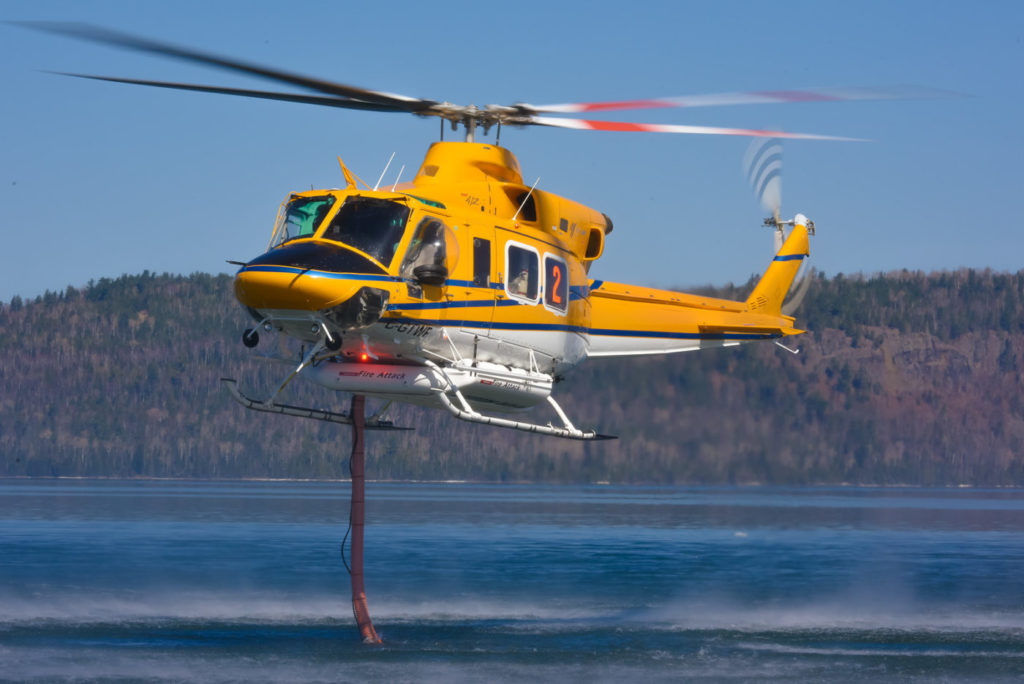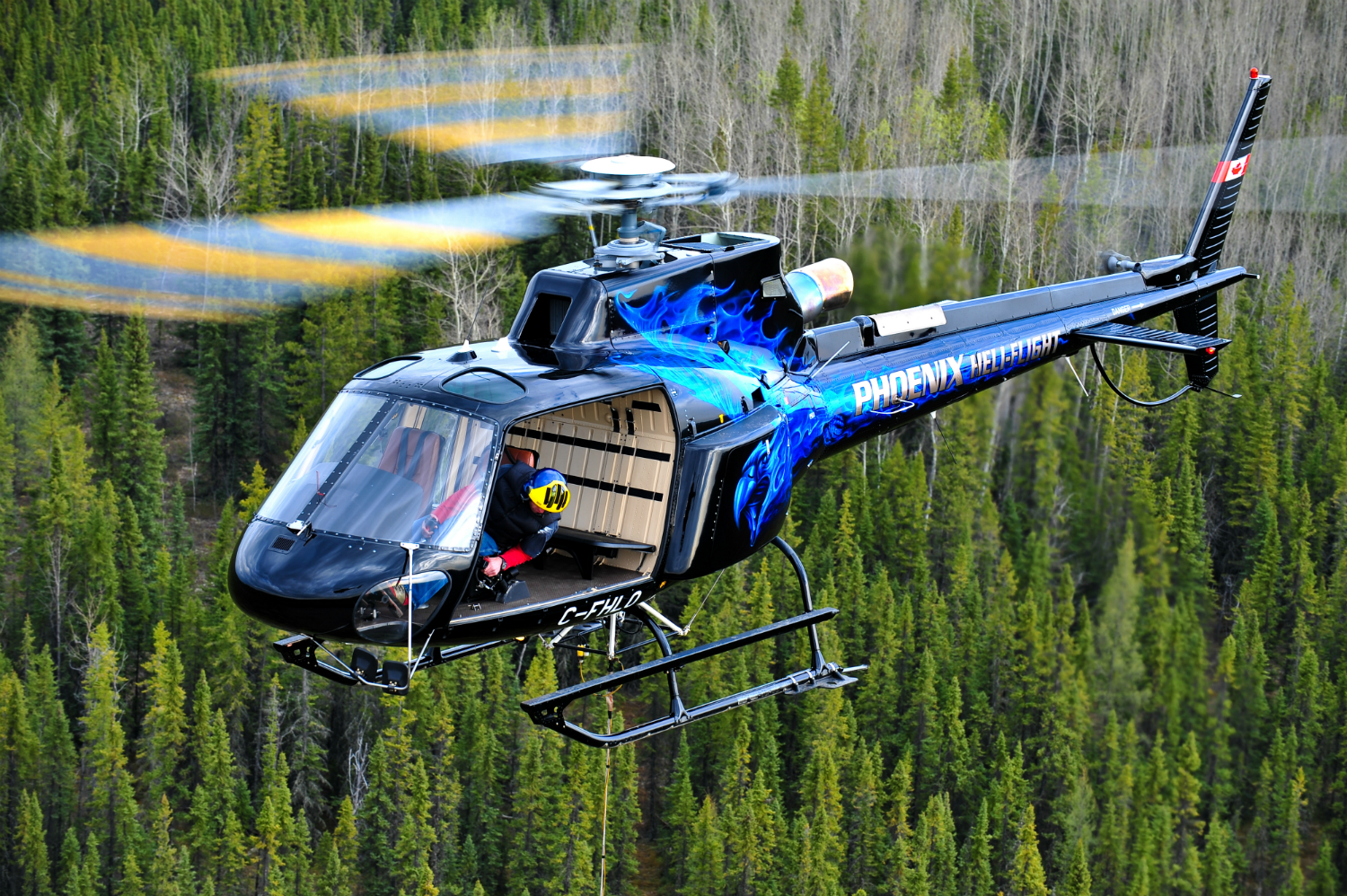On May 30, helicopter pilot Paul Spring was waiting to assist with the evacuation of Fort Chipewyan, Alberta, a settlement of about 1,000 people located 430 miles (700 kilometers) northeast of Edmonton. Out-of-control wildfires were burning within six miles (10 kilometers) of the community, which is accessible only by air, or boat in the summertime.

For Spring, who is president of Fort McMurray-based Phoenix Heli-Flight, it was one more urgent mission in a wildfire season that started early and has been building relentlessly.
“It’s spooky because it’s about the same timing as seven years ago, when Fort McMurray burned,” he told Vertical. “In the first week of May, we were already seeing 34 C [93 F] and very dry conditions. We have a pond on our property and in the springtime, it usually has quite a bit of water and there is an overflow system. This year, it was down two feet from the level last fall. We are in a severe drought here.”
On top of that, Spring pointed to wildfires already burning in Nova Scotia and British Columbia. As of May 31, the Canadian Interagency Forest Fire Centre (CIFFC) was at preparedness Level 5, denoting the highest level of wildland fire activity in multiple geographic areas. The agency reported a total of 211 active fires across the country at the end of May, 86 of which were classed as out of control. A total of 1,194 firefighting personnel and 10 aircraft had so far been mobilized.
A welcome regulatory clarification
Trevor Mitchell, president of the Helicopter Association of Canada (HAC), said his members are indeed busy fighting fires. At the same time, they are trying to interpret the effect of Canada’s new flight and duty time (FDT) regulations on their operations.
“What I’m hearing directly is that when Alberta [fires] kicked off, the only subject of conversation on the fire line was the new flight duty times, FRMS [fatigue risk management systems], are we flying [Canadian Aviation Regulations] 702 or 703, and what’s really going on?” reported Mitchell. “It’s the biggest discussion topic between the pilots at the coffee pot, the operators and the provincial fire entities. They are concerned about how this will roll out.”
The new regulations place tighter restrictions on pilot flight duty times for those flying under Canadian Aviation Regulations (CARs) Subpart 703 (air taxi). This includes any companies performing passenger charters.
However, the new FDT framework does not apply to Subpart 702 (aerial work), which remains under the previous regulatory framework.
Some operators were having trouble deciding which regulations applied to their particular mission, said Mitchell.
Fortunately, Transport Canada issued a welcome clarification on May 17 that helped make the distinction. Essentially, some language in section 722.16 of the CARs, pertaining to Carriage of Persons, was adjusted to clear up a grey area that had confused operators.
As confirmed by the regulator, approved 702 aerial firefighting passengers now include more than firefighters and fire control officers being carried within a forest fire area. The revisions to paragraph 722.16 (b) now specify that for flights under the direction of a fire control authority, aerial work rules apply when carrying a person “required for wildfire management as determined by the fire control authority” to “access or action an active wildfire” or “to access an area for the purpose of wildfire risk mitigation.”
Additionally, paragraph 722.16 (c) was amended to include the transportation of people essential to an aerial work operation “to and from” the worksite – instead of just “to.”
“These changes provided some clarity for firefighting operations moving forward,” said Mitchell. “The change in the verbiage gives firefighting ops a bit more latitude. It clarified loaded patrols and things of that nature as being under 702.”

However, he added that despite these clarifications, many helicopter operators are still short of pilots due to the new FDT regulations. On average, he said they need 30 percent more staff to do the equivalent volume of work they did last year.
“They have to double crew aircraft now that they didn’t before,” explained Mitchell. “One operator had six airframes sitting on the ground with no one to fly them, because they had to double crew other aircraft. It’s very much a struggle. The concern is on the day-to-day operations, definitely getting the people in and out and keeping everyone safe.”
He said most are trying to stay compliant under Subpart 702, while others are simply refusing 703 air taxi work because they are concerned about contravening the new prescriptive regulations. That may work while they are fighting fires, but Mitchell said it could be a different story when operators are fulfilling contracts for work that has a 703 component.
“There is a significant change in the way operators are doing business. They are turning down work.”
To compound the issue, said Mitchell, he is not aware of a single helicopter operator who has received Transport Canada approval after submitting their Notice of Intent (NOI) to deviate from the prescriptive regulations and follow their own alternate Fatigue Risk Management System (FRMS).
“We’re into this six months now. Members are frustrated and some are angry.”
In a recent membership call, Mitchell heard about an experienced pilot who is leaving to pursue another career path because “he can’t deal with the new regulations and their impact on 702/703 operations.”
He also recounted the story of two Eastern Canadian pilots who resorted to driving for Uber and delivering pizzas because their pilot pay is per hour flown – and although it’s a high rate, they are flying less hours these days due to the new regulations.
At Phoenix Heli-Flight, Paul Spring said work is proceeding full speed ahead under 702 regulations.
“When we started looking at our operations, there is very little here that is not 702,” he said. “About the only thing we do in 703 is tourism flights. Everything else we do – wildlife work, survey, powerline – we are working with people who are fully trained on the aircraft and operating specialized equipment for work, such as mounted video/infrared cameras, GIS [geographic information system] laptops and gyrostabilized binoculars for wildlife surveys.”
He is thankful that medevac operations were exempted from the new regulations, indicating that had they not been, “it would have killed medevac in Canada.”
Spring agreed that everyone is busy and reported that all his helicopters are almost fully booked for the summer.
“Everything we have is either committed or flying,” he said. “We’ve given Forestry all we can give them. We have major long-term service agreements with our other clients and we will not cancel booked work when Forestry calls, even though we wish we could help more.”
For the small amount of 703 work performed by Phoenix Heli-Flight, Spring said they’ll just follow the prescriptive framework, “with guys like me who don’t fly front line all the time, so I can be backup.”
Meanwhile, operators are grateful for the clarification to 702 rules that further define firefighting operations. In a busy and early Canadian fire season, every asset that can be mobilized will likely be called upon at some point.
As he waited to assist in what would turn out to be a successful evacuation of Fort Chipewyan, Spring sighed.
“We might be in for the long haul this year.”









